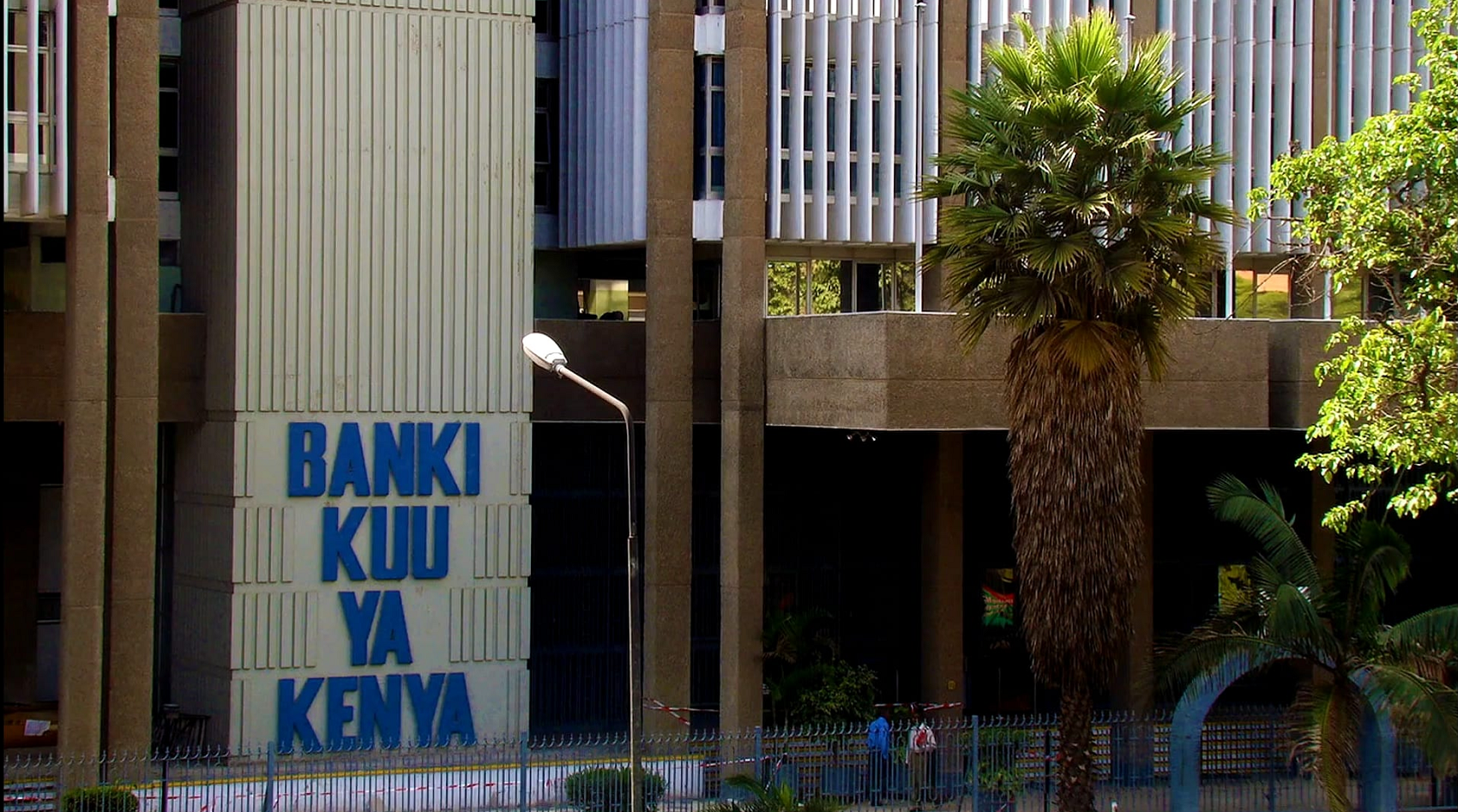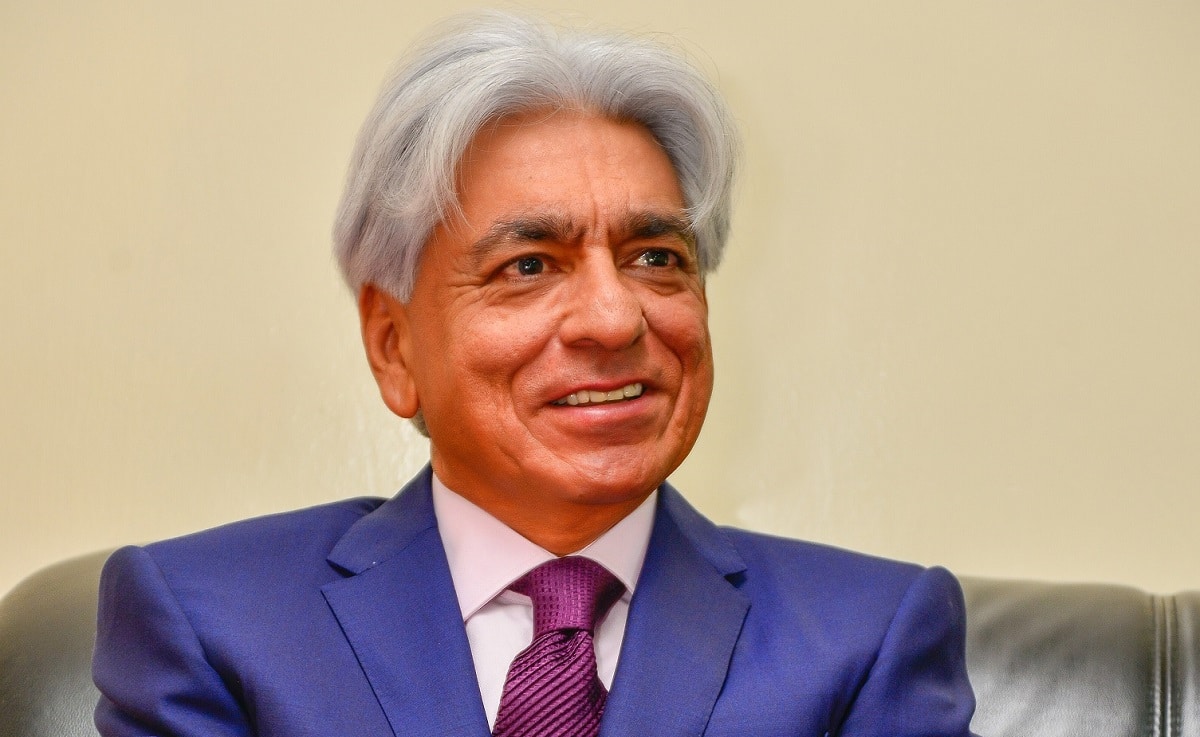Job seekers are leaving their countries of origin every year to find jobs abroad. Considering that the vast majority of migrant workers are low-skilled, they can be viewed as particularly vulnerable. In this regard, the management of labour migration is a challenging issue for governments all over the world.
Aware of this situation, governments see the need for protection of migrant workers from exploitative recruitment and employment practices, as well as the need for the provision of appropriate pre-departure assistance, welfare and on-site services.
Although many countries of destination have policies for the admission, stay and employment of foreign workers, there are a fewer number of countries of origin that possess specific legislation or policies focused on the needs of their own nationals abroad.
Brain-Drain or Brain Circulation
Some countries have put into place policies and legislation designed to protect their citizens abroad, while others, recognizing the need for human resource planning, have factored in strategies that promote overseas employment as a means of poverty reduction and employment identification.
Human capital flight, also known as brain-drain, has in many ways dented countries’ economic prospects, let alone thier academic and professional standings. Brain-drain is harmful for any country. Its effect on the economy and social area of a country are devastating.
Countries lose quality skilled workers. It’s true that recipient countries provide better salary scales but every country needs its professionals for development. Almost all top-performing students in higher level of educational institutions are likely to be the ones to migrate.
Brain-drain is the process in which a country loses its most educated and talented workers to other countries through migration. This trend is considered a problem, because the most highly skilled and competent individuals leave the country, and contribute their expertise to the economy of other countries. The country they leave can suffer economic hardships because those who remain don’t have the ‘know-how’ to make a difference.
Brain-drain can also be defined as the loss of the academic and technological labour force through the moving of human capital to more favorable geographic, economic, or professional environments. More often than not, the movement occurs from developing countries to developed countries or areas. There are various causes of brain-drain, but they differ depending on the country that is experiencing it.
The main causes include seeking employment or higher-paying jobs, political instability, and to seek a better quality of life. Some other factors are the absence of research facilities, employment discrimination, economic underdevelopment, lack of freedom, and poor working conditions.
Higher paying jobs and a better quality of life attract the people to its superior economic outlook, the prestige of foreign training, relatively stable political environment, and a modernized educational system to allow for superior training, intellectual freedom, and rich cultures.
These lists are not complete. There may be other factors, some of which can be specific to countries or even to individuals. When brain drain is prevalent in a developing country, there may be some negative repercussions that can affect the economy. These effects include but are not limited to:
- Loss of tax revenue
- Loss of potential future entrepreneurs
- A shortage of important, skilled workers
- The exodus may lead to loss of confidence in the economy, which will cause persons to desire to leave rather than stay
- Loss of innovative ideas
- Loss of the country’s investment in education
- The loss of critical health and education services
To add to the above description of brain-drain, its a by-product of capitalizing better opportunities by abled people. In addition, brain-drain is bad for not just one country but in the long run, it is also bad for country which is constantly consuming talent from other countries as it deprives its own people jobs and create problems for it
Brain drain is one of the many problems developing countries grappling with. Hundreds of skilled professionals are immigrating to advanced countries in Europe, U.K., Canada, America, Australia, New-Zealand, and UAE.
Brain-drain pros and cons
Let’s see some of the pros and cons of this brain drain for the countries. Undoubtedly, this huge loss of skilled human resource adversely affects national development. Thousands of skilled professionals such as engineers, IT professionals, doctors, scientists, accountants, managers, teachers, and general workers immigrate to the countries for various reasons.
If all those skilled professionals stayed in their countries and contributed to their developmental process, the development would accelerate. Developing countries are working as nurseries for creating skilled professionals for the advanced countries of the world at the cost of their own interests.
Now let’s ponder over the causes that influence brain-drain. Better life conditions, higher pay packages, better health facilities, transparency, better working environment, incentives, to mention but a few.

On the other hand, substandard living conditions, under-utilization of skilled and semi-skilled personnel; lack of adequate working conditions; poor management, low and corroding wages, discrimination in recruitments and promotions, corruption, general backwardness and instability, etc. are some of the factors that also compel skilled nationals to immigrate to advanced countries.
Governments should look into these causes and must strive to create a better work culture, facilities, and opportunities to skilled professionals in the country. Governments must aim at creating world-class life conditions, pay-packages, transparency, financial and health security, incentives, etc.
The Employment Challenge
Decent employment is a fundamental right for every individual. Unemployment and underemployment among youth is a global problem that most governments have to contend with. The problem has worsened in recent years because of the global recession.
Whereas economic performance is directly related to job creation, the recent erratic economic performance experienced globally has reduced the employment prospects for youth.
The difficulty of finding suitable employment is compounded by a host of other problems confronting young people. These include illiteracy and insufficient training and are worsened by periods of world economic slow-down and by overall changing economic trends.
Read Also >> How to turn our youths into effective leaders
The combination of skill mismatches in the labor market and the rapidly growing number of new entrants to the labour market has created a situation in which too many young people have a hard time finding jobs. Slow growth, stagnation and even recession in African economies mean that the formal economy cannot create jobs at the levels that the growing demography of young people in developing countries demand.
Kenya’s unemployment
According to the 2015/16 Kenya Integrated Household Budget Survey (Labor ForceBasic Report) by the Kenya National Bureau of Statistics (KNBS), seven million Kenyans are unemployed. Out of these, 1.4 million have been desperately looking for work. The rest have given up on job hunting, with some opting to go back for further studies.
The survey, released in March 2018, paints a grim picture of the country’s unemployment levels, while shattering the 40 % unemployment rate myth. According to the survey, up to 19.5 million Kenyans are active in the labour force, the majority of them in low-cadre, poor-paying jobs. Still, this puts Kenya’s unemployment rate at 7.4%, a significant departure from a high of 40% that has been cited many a time.
In 2016, there were about 25 million Kenyans in the working-age bracket of between 15 and 64 years. Out of these, 78% were economically active. Over half of the country’s working-age population has primary school level of education. The working-age population is expected to increase to 28.5 million by 2020. About 4.2 million working-age Kenyans were either in college or secondary school and not active in rolling the wheel of the economy.
The report shows that 5.6 million working-age Kenyans were economically inactive.
Labour Report
“The main two reasons of inactivity were school attendance and family responsibilities, accounting for 73.8% and 13.1% respectively,” reads the report. “Considering the prime age of 25 to 54 years, family responsibility and sickness or injury were the two main reasons for inactivity.”
The survey also paints a grim picture of growing youth unemployment, with a huge portion of the population aged between 20 and 24 years not engaged in any work or business.
Nine in every 10 unemployed Kenyans are 35 years and below. “The largest unemployment rate was recorded in the age cohort 20–24 at 19.2%,” reads the report.
Youth unemployment has been described as a ticking bomb, with frustrated young men and women susceptible to drugs, prostitution, or even being lured into terrorism. Kenya’sPresident Uhuru Kenyatta is banking on the manufacturing sector for job-creation.
The sector is one of the pillars of Uhuru’s Big Four agenda. The other pillars are universal healthcare, food security, and low-cost housing.However, a poor economy has seen companies shed jobs in the past five years even as the economy has averaged a growth of 5%.
See Also >> Top Kenyan CEO set ambitious targets for 2020
Since January 2016, more than 20 companies have either folded and shipped out or simply downsized, leaving thousands jobless.The situation worsened when the economy slowed down due to an extended electioneering period, reduced credit uptake by the private sector, and a crippling drought.
The 2015/16 Kenya Integrated Household Budget Survey showed that even for the many Kenyans who were employed, their skills were not fully being utilized, with graduates increasingly taking jobs that could easily be done by Form Four leavers.
The survey indicated that 3.7 million or 20.4% of the employed persons in the working-age population were under-employed, meaning they were available to work for more hours but were not given the opportunity.
Those mostly underemployed were aged between 15 and 19 years. Their under-employment rate stood at 55.4%.
Defining unemployment
However, the figures from KNBS were praised for challenging the long-held perception that the country’s unemployment rate was approaching 40%.
“There are metrics and rules of defining unemployment which have been set by the International Labour Organization and other international bodies. The numbers that we have in terms of unemployment are people who are willing, they are able, and they are actively looking for a job,” said the Treasury principal secretary, Dr Julius Muia.
Employment rate stands at 77.4%. The then Treasury Cabinet Secretary Henry Rotich attributed the improvement of the employment rate from 72.6% in 2005/06 when the last survey was done to various government programmes. “The significant improvement in the living standards of majority of Kenyans is attributable to the Government’s investments in infrastructure and the social sector,” he said
Kenya faces five key employment challenges, namely; high youth unemployment, rapidly growing labor force, under-employment, the problem of the working poor, and gender inequality in employment. Youth unemployment is, therefore, more than double the national unemployment rate.
It should be noted that:
- Youth unemployment can have a serious negative long-term impact on national economic development aspirations.
- Youth are the among the first to bear the brunt of the negative effect in times of economic crises
- The transition period for the youth (between the time of finishing formal training and obtaining employment) often lasts several years exposing them to anti-social behavior and exploitation.
- The economy is unable to create job opportunities for the over 800,000 annual entrants into the job market.
- Most youth are fairly educated and energetic. This potential needs to be harnessed for effective economic development in line with the Constitution,2010, Vision 2030 and the Jubilee Manifesto.
Rational for Export of Human Capital
According to IOM 2019, there are currently more young people in the world than ever, 1.8 billion, the largest generation in history. Of the 258 million international migrants, around 11 percent of them were below 24 years old in 2017. Young people have a key role in policy discussions, rising up worldwide for their rights and better opportunities and demanding a seat at the table in decision-making processes.
Rapid growth in Kenya’s population and labour force relative to formal sector employment has meant that many workers either enter the informal sector, which could reflect disguised employment, or are openly unemployed. The high increase in the number of youths has led to labour supply outstripping demand.
People, especially the youth, tend to move to regions where they believe they can improve their well being, which is generally seen as where work is available. However, Labour migration remains an untapped potential source of jobs that can rise to meet the unemployment challenge confronting Kenya today, especially among the youth.
It is therefore imperative that the government puts in place policies that will focus on managing migration effectively to enhance it positively and reduce the negative impacts. Such as:
- Illegal recruitment-that involves misinformation or deception; recruiting migrant workers for jobs that don’t exist overseas;
- Misrepresentation: Recruiting migrant workers without license issued by the government;
- Overcharging or payment of additional and unnecessary fees other than what is required by lawsuch as training and agency fees;
- Trafficking of migrant workers;
- Inappropriate training programs and non disclosure of information regarding the job
- Deploying without pre-departure counseling, seminar or orientation;
- Being locked up, maltreated, exploited, or sexually harassed or abused during training or onhiring
- Withholding of travel documents
- Lack of insurance, social security or other means of government support for migrant workers intransition.
However, in the 21st century, the movement of people is expected to become more significant as a result ofcontinued globalization and economic liberalization.
Remittances
According to the World Bank, October 2019, Report, Remittance flows to low- and middle-income countries (LMICs) are expected to reach $551 billion in 2019, up by 4.7 percent compared to 2018. Remittances have exceeded official aid – by a factor of three – since the mid-1990s. This year, they are on track to overtake foreign direct investment (FDI) flows to LMICs.
In 2019, in current U.S. dollar terms, the top five remittance recipient countries are projected to be India, China, Mexico, the Philippines, and Egypt. As a share of gross domestic product (GDP) for 2019, the top five recipients would be smaller economies: Tonga, Haiti, Nepal, Tajikistan, and the Kyrgyz Republic
Cash sent home by Kenyans living abroad in the first 11 months of the year of 2019 increased by the lowest rate in three years. The latest data from Kenya’s Central Bank of Kenya puts remittances for the period at $2,546 billion (KES 256.4 billion), a 3.8 per cent rise, in the period compared with $2.453 billion (247 billion)last year.
In 2018 , the remittances had grown by 40.7% from 2017 at the same period in the year. North America accounted for the bulk of the remittances, contributing 47.84% on to the 11month total, followed by Europe at about 23.9% while the rest of the world combined accounts for about 28.07%.
The rapid growth last year had been driven partly by a tax amnesty for Kenyans repatriating assets stashed abroad, It was due to expire in June 2018,but was extended to June 2019. As a result, the remittances hit an all-time monthly high of $ 295.3 million(KES 29.7 billion) in June before moderating in subsequent months.
In November 2019, Diaspora Kenyans remitted $218.8 million (KES 22.03 billion) which was a 2.4% decline compared with October, when they sent home $224,3 million (KES 22.6 billion).It was lower than the KES 22,2 billion they sent home in November 2018.The Remittances though remain Kenya’s biggest source of foreign exchange ahead of other traditional sources such as tourism, tea and horticultural exports.
Dollar Inflows
These dollar inflows have helped prop up the shilling in the foreign exchange market, and also narrowing the current account to 4.1% as at the end of October from 5% in December 2018. In the year 2019, Kenya’s current account deficit also contracted due to a fall in imports – which means there were lower outflows in payments-largely due to lower SGR and industrial machinery imports.
The Central Bank of Kenya (CBK) only measures the money remitted through formal channels that include Commercial banks and other authorized International remittances service providers in Kenya.
Informal Channels
Money remitted through informal channels is therefore not reflected in the official data, meaning that dollar inflows are likely to be slightly higher than reported. In earlier briefing, the Central Bank of Kenya governor attributed the increase in remittances in the past two years to improvement in the channels of sending money back home.
Local banks have entered partnerships with remittances service providers that are allowing them to handle larger volumes of inflows.As a source of foreign exchange for the country.Remittances contribute about 5% of the country’s GDPfar outstripping Overseas Development Assistance (ODA).
These interactions result in exchanges and sharing of knowledge between nations.
Most of the remittances are directed to household consumption and therefore the Government should come up with a policy to leverage on the same. This gives us insight on how important the contribution of Kenyan Diaspora is for economic development of the country.
It is, therefore, important for policy makers to view migration as a development tool and as an important source of capital, rather than a failure of development. This is in line with Vision 2030 that seeks to implement a comprehensive strategy and labor export policy in order to tap remittances.
Forward and Backward Linkage in Skills and Technology Transfer
Whereas financial benefits may be the main motivating factor prompting workers to migrate, it’s a fact that while abroad; migrant workers come into contact with diverse techniques and technologies that they may adapt and use on return home. Hence, besides the financial remittances, they also bring the know-how and the social capital.
Know-how may include a collection of skills and behavior patterns that are essential for the Kenyan youth, they may also include technical competencies, language, skills and experiences. This will go a long way in contributing to the attainment of the Governments Vision 2030.
Cultural Interface
Labour migration leads to an exchange of cultural values. It serves as an opportunity to interact with people of other countries and gives a platform for people from diverse backgrounds to come together and share their views, attitudes, values, goals, practices and national philosophies.
These interactions result in exchanges and sharing of knowledge between nations. It also opens doors to many new fields of education and career opportunities. Cultural exchange is also a catalyst of world peace as people co-exist in respect of the cultures and beliefs of each other and experience abroad. The youth returnees may adopt and implement some of the best practices experienced in foreign countries.
Labor Migration as Source of Livelihood
In Kenya, Labour migration as an industry, is a source of business for over 200 Private Employment Agencies that support the government initiative by sourcing for employment opportunities abroad. These agencies further provide gainful employment for those involved. Furthermore, training institutions have come up to offer requisite courses for those seeking employment abroad.
Challenges to Human Capital Export
There exist institutional capacity constraints that need to be addressed by all stakeholders in this sector. These challenges include;
i. Weak legal, policy and regulation structures to guide and manage labour migration
The rights of labour migrants whether moving legally or illegally across borders is considered as an integral human right. Kenya is yet to craft interconnected and intertwined laws and mechanisms to streamline labour migration. Due to weak legal and policy regulation welfare of labour migrants has not been catered for fully.
ii. Weak linkages, collaborations among relevant government agencies
There is lack of a central co-ordinating agency to streamline and manage labour migration processes.
iii. Lack of comprehensive skills inventory
Due to a mismatch between skills of the unemployed and the skill requirement of potential employers, a significant proportion of trained youths tend to remain unemployed for long periods.
iv. Inadequate data on migrant workers
No substantive data has been maintained on migrants workers by either the government agencies or stakeholders. Many young people migrate on their own without knowledge or involvement of stakeholders. This means that the figures quoted are estimates and the exact number of migrants is not known.
v. Weak regulatory measures on PEAs
There is no legislation to regulate the activities of Private Employment Agencies (PEAs). The ministry responsible for labour regulates the activities of PEAs without a strong legal backing and hence the offenders are not held accountable to the provisions of law. There is lack of set licensing standards for recruitment agencies.
vi. Inadequate marketing and communication strategy
Lack of labour market information is a binding constraint in searching for work. Insufficient labour market information may also worsen the discrepancy between labour demand and supply of particular types of skills.
vii. Inadequate human technical, financial and logistical capacities for existing migration unit
Given that the weak policy provision for labour migration, financial and logistical support from theGovernment has been bare minimum. This is compounded by lack of human capacity on labour migration laws and implementation processes.
viii. Nonratification of international conventions and protocols
The dilemma facing labour migration in Kenya is that the receiving countries have not signed or are not signatories to international labour conventions and protocols. There is also lack of bilateral agreements between Kenya and destination countries in which Kenyan migrants are working. Migrant workers are therefore left at the mercy or tolerance of the host countries’ sovereign systems.
ix. Prohibitive cost of remittances
The main challenge related to remittances is high transfer costs leading to labour migrants using unofficial and risky means of money transfer. This means that such remittances will not be documented and therefore not accounted for.
x. Lack of mechanisms for social security transferability and portability
There is lack of an effective national labour migration policy that is founded on a reliable legislative basis, to enhance the management of migration processes, prevent illegal migration and strengthen social protection of migrants.
Entry, stay, work and exit are within the exclusive jurisdiction of the host country, whose national system and culture determine how they are to be treated. Migrant workers are not nationals of the host country which quite often have no detailed local laws that deal specifically with migrant worker issues.
Data and information
Challenge for labour-sending states is to incorporate the necessary and appropriate standards to protect their migrant workers into contracts and other legal documents which have the force of law behind them. Considerable progress has been made by the Kenyan Government towards mainstreaming therole of Kenyan Diasporas in the national development agenda.
However, there is still critical information related to their size, motivations, skills levels, challenges they face and activities they engage in. Therefore, to fill these data and information gaps, it is important to develop a comprehensive labour migration policy and strategies to guide the process.













Leave a comment